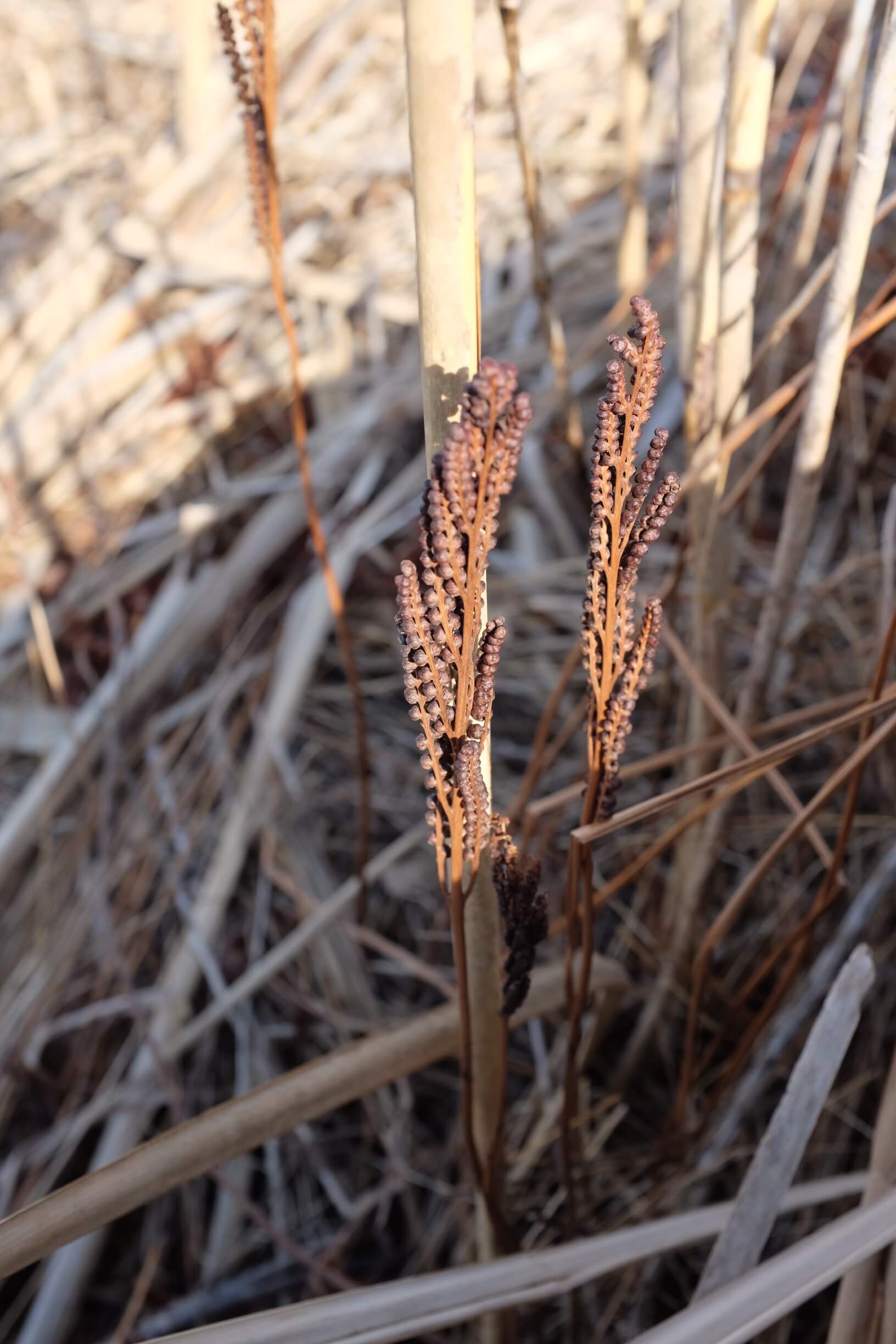Ferns may not seem too interesting at first glance, but the fact they are one of the most abundant seedless vascular plants on the earth gives them an edge worth talking about. While most fern species occur in the tropics, they are also an important slice to understory vegetation through many other regions – including our area here. They prefer a soil high in organic matter and acidity; some tolerate dry soils, others prefer a soggy one, some spread, some stay a simple clump. Pine needles and leaf litter is a great natural mulch ferns will love as they decompose and keep the soil acidic and high in organic matter.
For shaded, dry areas, hay-scented fern (Dennstaedtia punctilobula) and Christmas fern (Polystichum acrosticoides) are best adapted to well-drained soils that might not hold moisture well. Hay-scented fern prefers partial shade or bright shade and an area to spread. A colony soon forms by the underground rhizomes of lacy, arching, two-foot fronds. Choose wisely where you place this plant. The Christmas fern on the other hand forms a clean clump that may widen over time, but not spread like hay-scented fern. Two-foot-tall ferns stay green year round in a part- to full-shade area in a dry- to medium-moisture soil.
For wetter soils, cinnamon fern (Osmundastrum cinnamomeum) and ostrich fern (Matteuccia struthiopteris) are two showstoppers for the moist, shady garden. If the soils are consistently moist, the ferns will tolerate some more sunlight. Cinnamon fern reaches upwards of five feet, with fertile fronds emerging in the spring followed by the sterile fertile fronds. The fronds shoot out of the ground in spring like a vase, adding elegance to the garden. The fertile fronds are an attractive feature of this plant throughout the whole year – they emerge green and turn a cinnamon brown color that persists as they harden and dry through the summer and fall. Ostrich fern is a similar species to cinnamon fern, but what cinnamon lacks in size, ostrich fern makes up. It’s a delicate and elegant fern that also shows off as a large green vase shape, with fronds reaching nearly six feet tall and widening to almost eight feet wide. Ostrich fern will form a colony in optimum conditions. The fertile fronds, much like the cinnamon fern area, separate from the sterile fronds. They appear mid-summer and can persist into the winter.
Ferns make great additions to areas that contain hostas, hellebores, heucheras, hydrangeas, rhododendrons or other shade-loving plants. Ferns can add color to a shade garden – check out varieties such as Japanese painted fern for its silvery grey foliage, or brilliance autumn fern with its bright, fall-like new growth in spring. Choose ferns wisely, as they vary greatly in cultural needs and growth habits. Read the plant labels, do research and ask a knowledgeable associate at Cape Shore Gardens which fern works best for your garden.
Cape Shore Gardens is located at 1028 Rt. 9 S., Cape May Court House. For more information, call (609) 465-5161.
Written by Lauren Popper, horticulturist at Cape Shore Gardens and graduate of Temple University’s School of Environmental Design.








